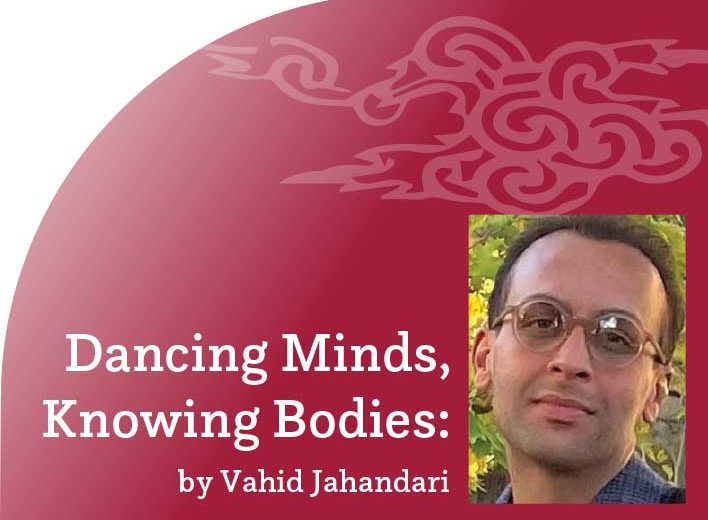Critical Race Theory: Myth and Truth
By Hooshyar Afsar
Introduction
Odd year elections after a presidential election year are often used as a harbinger for what to expect in midterm elections. The Virginia and New Jersey gubernatorial races, plus other statewide elections in November 2021, are indicators of the mood of voters. Republicans had significant success in using Critical Race Theory and its presumed newly-found influence in the educational system to make gains. They succeeded in scaring many voters of the “future threat” Critical Race Theory embodies in turning young people away from the view of the U.S. as a “shining” example of democracy and human rights. They succeeded in using it as a scapegoat to attract voters who are scared of losing their sense of “pride” in their country. This is my second article related to Critical Race theory (see Peyk #195 for my article on Intersectionality). (1) In this piece, I intend to shed light on misinformation and disinformation regarding Critical Race Theory and perhaps debunk certain myths. In future articles, I will focus on its impact on immigrant communities like ours and how failing to apply it to our settings in the United States could have negative future consequences.

What is Critical Race Theory?
The fundamental premise of Critical Race Theory (CRT) is that race is a social construct that is invented for social, political, and economic gain. There is no scientific basis for the construct of race. The Human Genome project that concluded in 2000 once and for all ended any doubts about the fact that human beings all over the planet share over 99.97% of their DNA. Since the year 2000, there have been certain efforts to discover a “race gene” that have all ended in failure. From a scientific standpoint, differences associated with race are superficial and are caused by thousands of years of climate conditions. These include the color of skin that is the most pronounced “racial” distinction.
The fact that race is an invented social construct does not mean that it can now be ignored and or denied. For hundreds of years, the notion of race and racism has been interwoven into the social fabric of societies around the world. In a sense, it has become a social reality causing significant disparities in many facets of life, impacting the livelihood of tens of millions of people in the U.S. alone. In fact, the concept of “colorblindness” and claims that we should see no color when judging people have been used to keep racial disparities in tact since the 19th century. CRT emphasizes that, although race is an invented social construct, it can not be ignored and we should not fall for the trick of “colorblindness.” CRT scholars criticize colorblindness as one of the liberal principles that help keep structural racism in place in many social structures and settings, including legal ones.
Intersectionality is another major pillar of CRT. Intersectionality is a framework by which various aspects of a person’s or group’s identity are considered as interconnected and overlapping rather than in prioritized and/or isolated fashion. These aspects include—and are not limited to—race, gender, caste, class, sexuality, ethnicity, and citizenship (immigration status). For more on intersectionality, please see the article I wrote on the topic in Peyk #195.
Many scholars have also defined CRT as more than a theory and as a movement or a “collection of activists and scholars interested in studying and transforming the relationship among race, racism, and power.” (2)
The terms “critical” and “critical theory” also stem from a school of thought that envisions challenging power structures and liberating human beings from social conditions that enslave them.
Critical Race Theory and Social Sciences Curriculum
In the past two years, the introduction of CRT in education has been used as a scapegoat by the right to make political gains. Let’s look and ask: how significant is the impact of CRT on the educational system?
First and foremost, CRT has been mostly on the curriculum in higher education and for the most part in law schools in the United States. One clear reason is that many young college students are interested in CRT so there is a demand for it. When it comes to primary and secondary education, there are only a few school districts in the country that have talked about introducing CRT. The changes we have seen in secondary education curriculums in certain places is more an adoption of a factual approach to U.S. history—promoting racial awareness or adapting an anti-racist approach—rather than CRT per se. For example, up until a few years ago, the school district in Albemarle County, Virginia (home of Thomas Jefferson, the author of the U.S. Declaration of Independence, the third president of the U.S., and one of the prominent founding fathers and architects of the United States), did not even cover the fact that Mr. Jefferson owned enslaved people, let alone the fact that he owned over 600 enslaved people during his lifetime and had at least seven children with one of them, named Sally Hemings, five of whom lived to be adults. During the election campaign this past summer, Albemarle County Public Schools were the target of accusations that they had adopted CRT as part of their curriculum. The county school board issued a statement that, while it emphasizes anti-racism programs, it has not added CRT to its curriculum.
It is a historical fact that many of the founders of the United States enslaved human beings and many others still went along with it. It is not hard to understand that many Americans are uncomfortable with talking about such facts and are concerned that somehow it makes young people less patriotic if they find out about such historical facts. Many people feel that telling the truth about the history of racial injustice in this country hurts America’s sense of “national pride.” Let’s look at CRT and U.S. history.
CRT and U.S. History
There are multiple lines of reasoning which oppose having a critical view of U.S. history from a racial justice perspective. Some believe that slavery, Jim Crow segregation, lynching terror, and similar injustices are all in the past and the U.S. has “gone beyond” them. Others argue that, when we look at history, we need to understand it in the context of the relevant times and it is “unfair” to judge the founding fathers and other prominent white male politicians of the pre- and post-American revolutionary era with a set of contemporary criteria. Last but not least, there are outright efforts to suppress historical truth by either not talking about it or by totally misrepresenting what actually happened. Let’s analyze these one by one.
As far as the argument that the U.S. has gone beyond the “sins” of the past, there is some truth to it. Slavery was abolished after the bloody Civil War, resulting from an active second founding movement, and black men received the right to vote with the passage of the 15th amendment which was fully ratified in 1870. Jim Crow segregation and the lynching terror of the segregation era was put to an end by the civil rights movements and the passage of the Civil Rights Act of 1964 and the Voting Rights Act of 1965. Yet, in both those cases, white supremacy and racism showed a lot more resilience and the country took major steps back. Jim Crow segregation was the eventual result of the 1877 compromise that ended reconstruction in the post-Civil War South. With the Supreme Court’s support, a set of openly racist Jim Crow laws were established in the South that lasted 75 years (from the passage of the Mississippi Plan/Constitution of 1890 to the Voting Rights Act of 1965). The end of Jim Crow segregation was turned back by resegregation of schools and housing in practice in the 1970s and 1980s without openly professing racism. White supremacy again showed that it would find a way back.
In fact, many civil rights movement activists came up with CRT as a result of the fact that the criminal justice system has shown to be intrinsically resistant to racial justice. Many of today’s racial justice theorists, including CRT theorists, show that a new system of racial control based on mass incarceration of black and brown people (predominantly men), complemented by mass deportations of the past 12 years, is now in place. Key to social mutation of systems of racial control in different forms is that fundamental social and economic oppression that are inherent to the systems of social and racial control have never been uprooted. In fact, certain CRT scholars believe that racism will never be fully uprooted in the U.S. None of this means that there has not been significant progress in the United States; there are clearly differences between slavery, Jim Crow segregation, and mass incarceration/deportation. For example, during the 75 year reign of Jim Crow segregation, mainly in the South, the majority of white Americans were okay with believing racist ideas that black people are racially inferior, yet today the majority of white Americans do not want to be known as racist and this applies to majority of CRT opponents. Of course, denying that racism continues to be systemic in almost all aspects of social, economic, and political life in the U.S. and in the legal and law enforcement systems is—by itself—a form of hidden racism, yet it is different from the openly racist ideas that justified slavery or Jim Crow segregation.
The second line of argument is the historical context narrative saying that we should understand the past times and see the founding fathers and other 18th and 19th century politicians in that light. The basic idea behind this argument is that those were different times and pretty much all powerful white men did it and were supported by all white women. In fact, that is not true. Even in the pre-American revolution era in the United States, there were abolitionists dating back to the 17th century, with many of them coming out of the Quaker church. The second president of the U.S., John Adams, never owned slaves even though he had a farm during the time that slavery was still legal in his home state of Massachussets. Many of Adams’ friends encouraged him to buy a few slaves and make more money without doing so much work on the land but Adams refused to do that. There were white male politicans of the time who either opposed slavery or renounced it and freed the enslaved people they owned. They were not in the majority, but they were there. These powerful men were contemporaries of slave owning founding father presidents such as Washington, Jefferson, and Madison. So, the argument that “everybody did it” doesn’t hold. Not all powerful white people of 18th and 19th century America were enslaving other human beings or racists who believed in systems of racial control. Having said that, there are various schools of thought in terms of studying history. I, for one, do not prescribe to eliminating historical context when looking at the past. In fact, context helps us understand why people did or didn’t do what they did. Of course, considering historical context does not justify injustice, racism, and enslavement even during those times. At the same time, one should not deny and ignore the temporal context of now and the scientific achievements of human society that has shed light on racist pseudo scientist ideas of enlightenment that justified a hierarchical and racist categorization of human beings. Those human species hierarchies put white Europeans at the top, representing all the “best” traits of humanity including intellect, wisdom, beauty, artistic creativity, and work ethic among others.
The impact of the last set of arguments that completely deny historical facts or make overt or covert attempts to ignore them should not be underestimated. Unfortunately, a clear trend to disinform (knowingly carry out a false representation of what happened) that was growing mostly on the right of the political spectrum came to a climax with the Trump presidency, such that lying with no shame became an everyday part of political and historical narratives. Certain academicians have characterized the Trump era as “post truth.” I, for one, believe that disinformation should be confronted with historical facts until hell freezes over. That is the only effective way to respond. For example, let’s take the case of the 2020 presidential election. Trump and his supporters continue to argue that the election was stolen in major cities such as Philadelphia, Atlanta, and Detroit, all metropolises with majority black populations. While there is no clear and proven evidence of significant irregularities that in any way could have changed the results of the elections, Trump and his supporters continue to beat the drums of disinformation to establish a completely false historical narrative. In the case of Atlanta in particular and Georgia in general, the Republican politicians in charge—such as Georgia’s secretary of state—fully agree that the elections were held with no major irregularities (in fact, Georgia’s presidential election had three recounts that reaffirmed the results beyond any doubt).
I used the 2020 election because it is still fresh in readers’ memories, yet the same complete falsehoods have been used many times pertaining to the more distant past. One prominent example is the portrayal of the post-Civil War 12 year reconstruction period (1865-1877) that has been falsely characterized in the past as the era of oppression of white population in the South by black people and black politicians. (3) This is completely untrue. In fact, the terror was committed by the KKK against freed blacks who wanted to peacefully participate in the social, political, and economic activity of the society. The false reconstruction era narrative, later dramatized in the movie Birth of a Nation (watch the Netflix documentary 13th with your family if you have not), was used to justify Jim Crow segregation that turned back the achievements of the reconstruction era.
This last set of arguments against CRT is also used in a more indirect fashion by many writers and academicians who acknowledge that many founding fathers owned enslaved people, yet the picture is presented by using such terms as “complicated” or “contradictory.” These terms are used to somehow reduce the severity of injustices committed. Jefferson is again a prime example because in words he opposed slavery, while in action he was for it. A prime example of such writers is Pulitzer Prize winner Jon Meacham who is celebrated in the liberal political circles including President Biden. In Meachem’s biography of Jefferson, titled The Art of Power, the author almost completely ignores what Jefferson said about black people. Meachem fails to mention that, in his book Notes On the State of Virginia, Jefferson characterizes blacks as intellectually inferior and lacking artistic and craftsmanship abilities. This is, of course, when Jefferson owned enslaved black artisans who were highly talented in many crafts required for running Jefferson’s plantation at Monticello near Charlottesville, Virginia. Of course, Meachem also forgets to mention that Jefferson called Native Americans “savages” in his U.S. Declaration of Independence and the fact that our third president’s racist ideas were not confined to black people. The fact that I am able to write the truth about historical figures like Jefferson is directly related to CRT and its critical analysis of history. CRT as a movement has also caused changes in Monticello regarding showing the racist side of Jefferson’s legacy, changes that were perhaps unimaginable in my first visit to Jefferson’s residence less than 20 years ago. Now, many young proponents of a critical view of U.S. history have dedicated part of Monticello to Sally Hemmings, the enslaved mother of five to seven of Jefferson’s children. Sally’s windowless private room was discovered to be hidden behind a public restroom and next to Jefferson’s own room to facilitate easy and private access. It has now been reconstructed and her memory is now being honored for the Monticello visitors.
Practical Impact and CRT Misrepresentation
It is true that one aspect of CRT is activism towards remediation of disparities caused by centuries of racism, from slavery to Jim Crow segregation to mass incarceration. Unlike what is being publicized by Fox News, CRT is not about affirmative action. Of course, affirmative action is one of the accomplishments of the racial justice movement that has resulted in the emergence of a black middle class and black academia. Without affirmative action, the percentage of representation of blacks and those from other communities of color in colleges and universities, particularly top tier higher education institutions, would diminish significantly. In fact, affirmative action has contributed to the emergence of many racial justice thinkers who have made their mark on the racial justice movements in the last forty years; yet, that is not what CRT is about.
As early as 1978, when a white man by the name of Allan P. Bakke took his lawsuit of “reverse discrimination” for being denied acceptance to medical school in California all the way to the Supreme Court and won, misrepresentation of CRT has been used by conservative circles to fight practical remediations of racial disparities such as affirmative action in education. Even today, FOX News is spearheading attacks against CRT as being equivalent to affirmative action to turn back its impact. Regardless of what we think about CRT in present day America, racial disparities are so wide and so deep that they require an ongoing effort to address them for the foreseeable future, efforts that need to go far beyond affirmative action if we are truly committed to realization of racial justice.
CRT talks about a critical look at past and present power structures and ways for human beings to liberate themselves from those aspects of such structures that curtail their freedom in any way. A critical look at history and continuation of the past unjust power structures in new forms today is also part of CRT. Giving voice to marginalized communities of the present day society and historical characters who were hidden behind the shadows of powerful characters such as Sally Hemmings is yet another possible outcome of taking a critical look at U.S. history.
Ending note
Celebrating Sally Hemmings’ legacy at Monticello is a clear example that CRT does not mean that we should be ashamed of U.S. history. It teaches us that there are many characters and movements in U.S. history that we could celebrate, honor, and learn from. It encourages us to be critical of the mainstream and “official” view of our history in this country. Perhaps we have been solely honoring and celebrating people in power and their oppressor power structures instead of the people and movements who challenged them. Perhaps the courage to inquire and uncover historical facts allows us to honor and celebrate those who truly deserve our recognition. Perhaps we could trust ourselves and future generations that a critical view of our history will allow us to learn the best historical lessons and use them as the guiding light for our future. Critics of CRT call it “revisionist” as if revising our views of our history is a bad thing. Perhaps, and only if we are committed to having healthy and thriving communities in this country, that kind of critical and factual revision is a good thing to keep alive forever.
References:
1- Afsar, Hooshyar, “Intersectionality and Our Community,” Peyk #195, September 2021. Available at: http://peykmagazine.com/en/2021/09/10/intersectionality-and-our-community/
2- Delgado, Richard; Stefancic, Jean (2017). Critical race theory: an introduction (3rd ed.). New York University Press. ISBN 978-1-4798-0276-0.
3- Foner, Eric (2019) xxii-xxiv. The Second Founding: How The Civil War and Reconstruction Remade The Constitution (1st ed.). W.W.Norton & Company. ISBN 9780393652574.
Hooshyar Afsar is one of the founders of Racism Awareness Project (RAP), an educational program on the history of and present-day racism in the United States and its impact on the Iranian American Community. RAP has had a variety of educational forums across the United States. Mr. Afsar has written several articles and book reviews on the topic for Peyk and other publications. He can be reached at hoosh.afsar@rapusa.org.

















